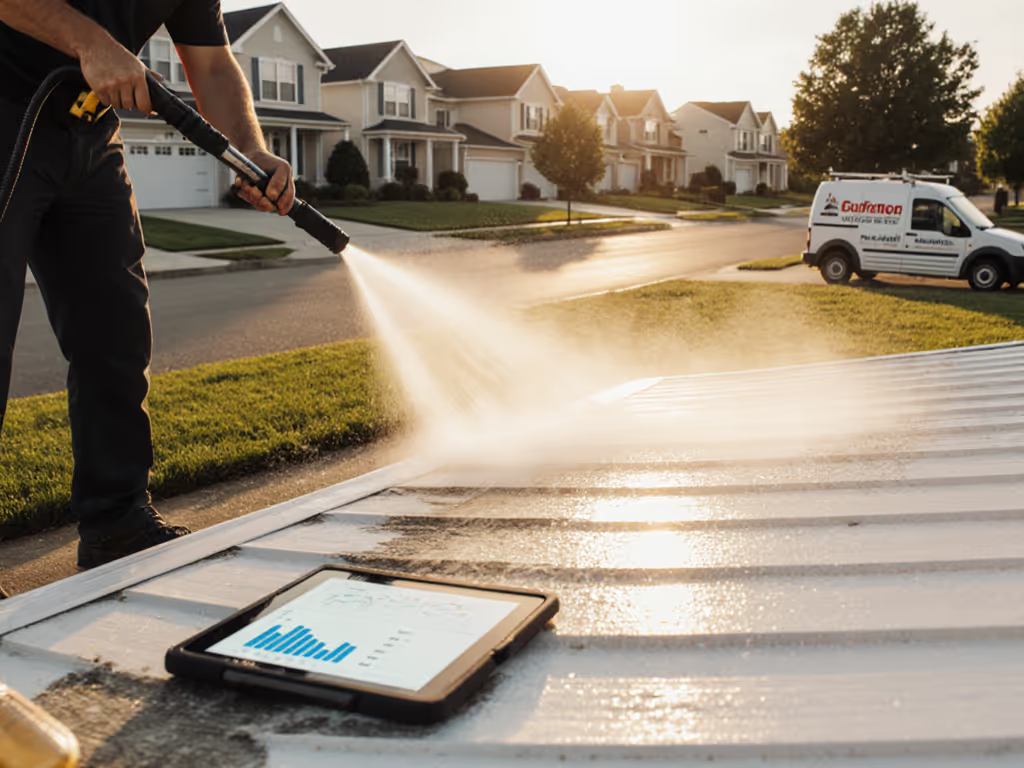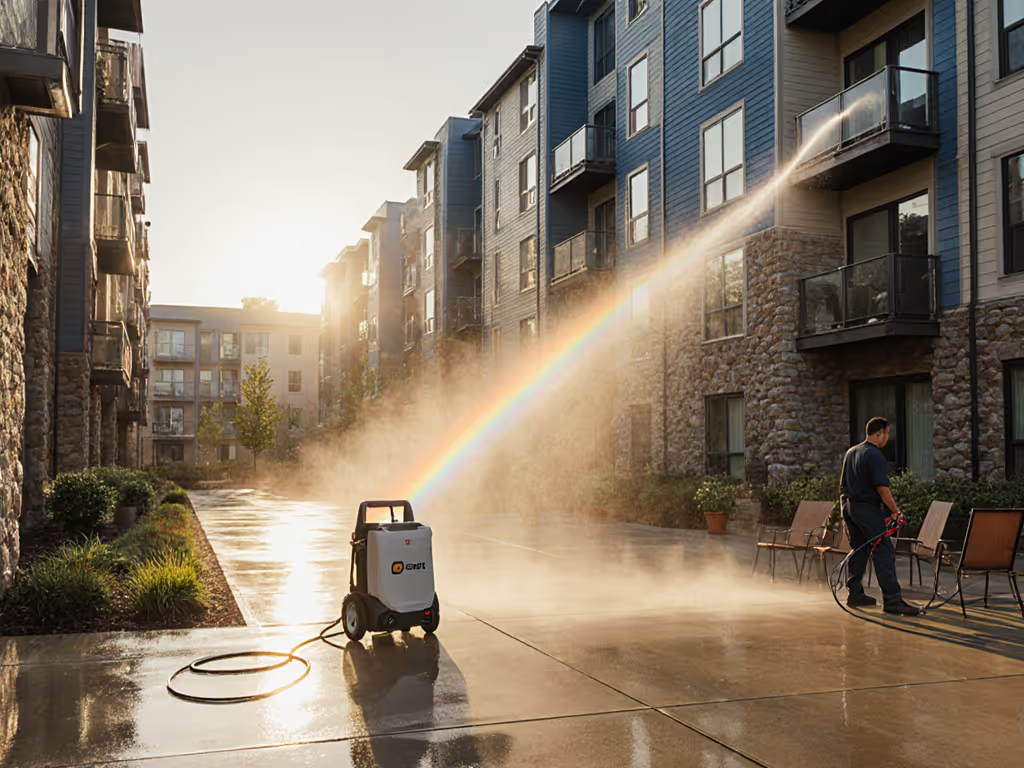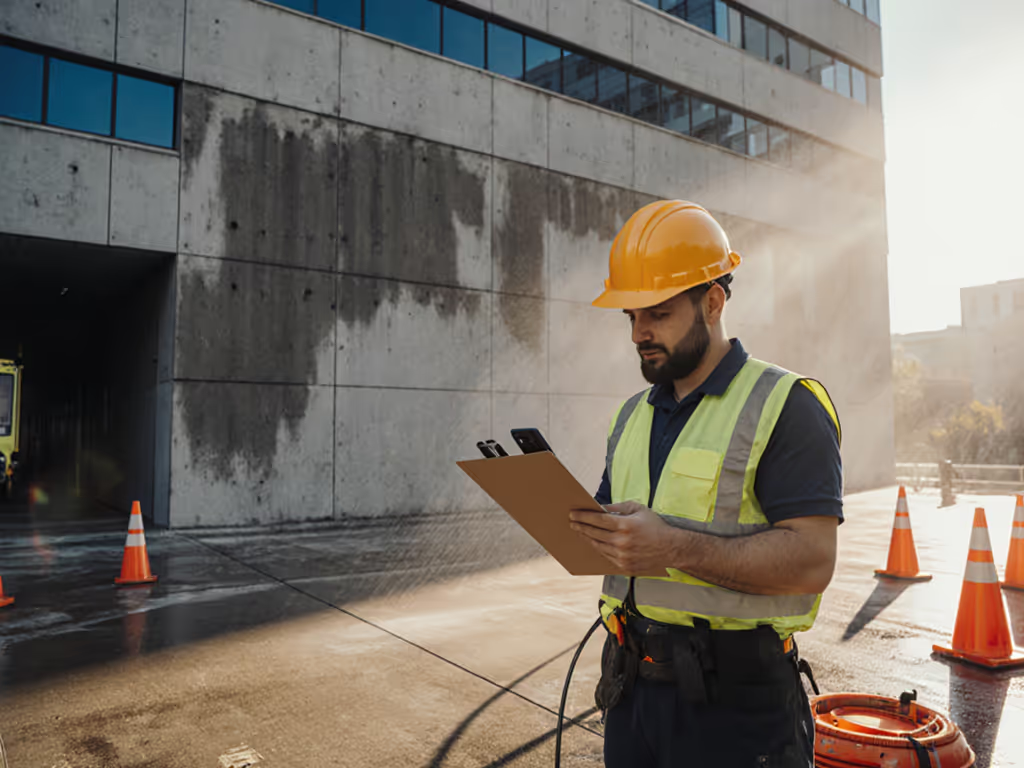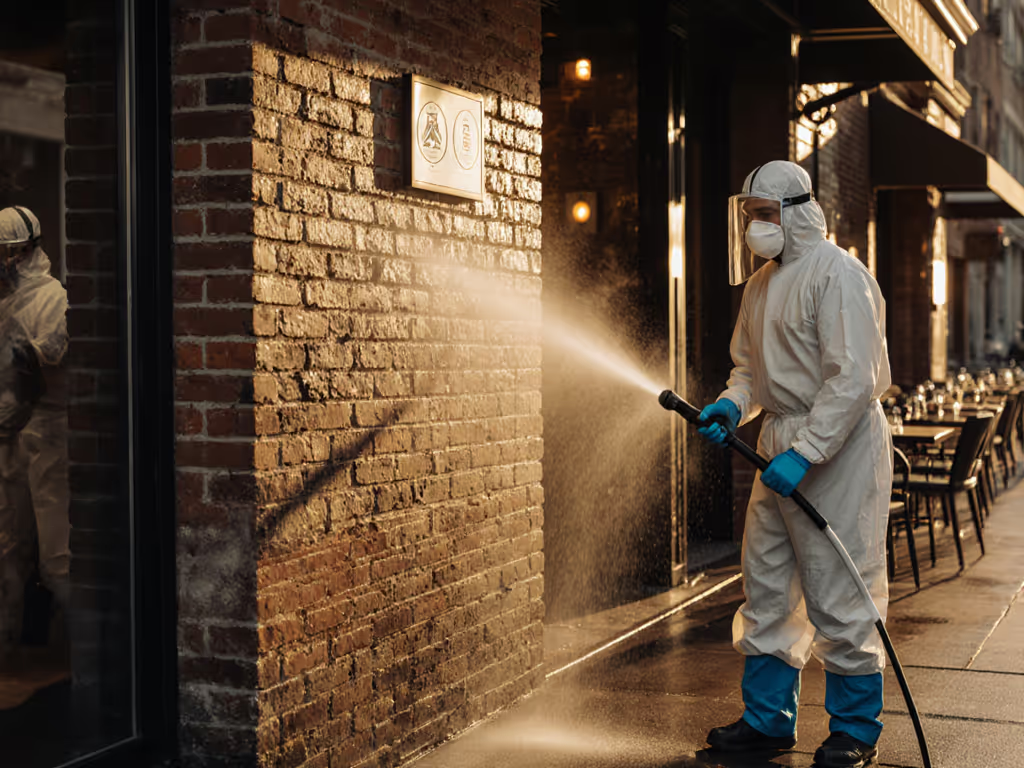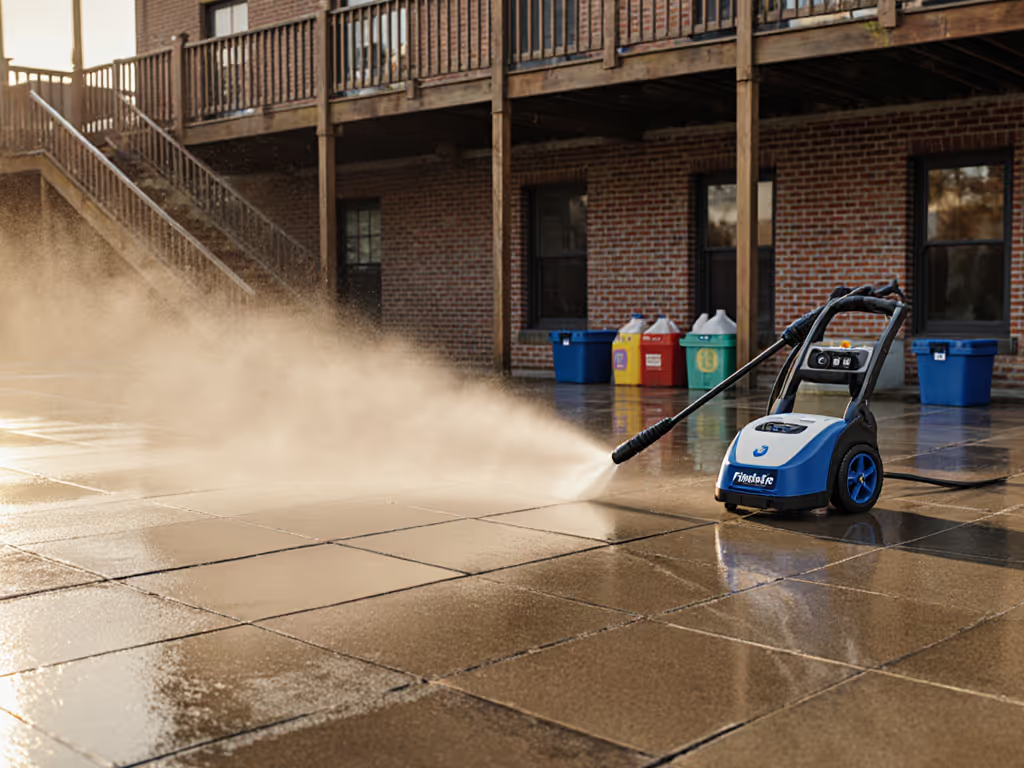
Damage-Free Commercial Pavement Cleaning Protocols

When commercial property managers schedule their annual exterior pressure washing or tackle routine commercial pavement cleaning, they're often motivated by one driving concern: avoiding costly damage while achieving professional results. The reality many discover too late is that pavement cleaning isn't just about blasting away dirt, it's a delicate balance between surface preservation and effective soil removal. I've witnessed countless facility managers and small contractors compromise their pavement investments with improper techniques that cause etching, pitting, and premature wear. The right approach requires understanding that pavement cleaning is chemistry first, pressure last.
The High Cost of Hasty Cleaning
Commercial properties face a unique set of challenges that residential cleaners often overlook. Parking lots, walkways, and loading zones endure heavy traffic, chemical exposure, and environmental stressors that demand thoughtful cleaning protocols. When property managers rush through pavement cleaning without considering material composition and surface vulnerabilities, they risk:
- Irreversible texture damage to the pavement matrix that creates new dirt traps
- Accelerated oxidation that dulls surface appearance and compromises protective coatings
- Water infiltration into cracks that expands during freeze-thaw cycles
- Stripping protective sealants that require costly reapplication
- Unintended chemical reactions with previous treatments or embedded contaminants
I recall working with a facility manager who developed chalky streaks beneath aluminum edging after switching to a high-impact pressure washing approach. The damage wasn't just cosmetic, those streaks indicated compromised oxidation control that would eventually lead to moisture penetration and structural decline. This is exactly why I advocate for controlled energy application rather than maximum force.
Why Pavement Responds Differently Than You Expect
Concrete, asphalt, and interlocking pavers each have distinct molecular structures that react differently to cleaning protocols. The porosity, aggregate composition, and surface treatments dramatically influence how pressure and chemistry interact with the material.
Chemistry does the heavy lift; pressure just rinses smartly.
Commercial pavement has been conditioned to withstand vehicles and weather, but not the concentrated energy of improper cleaning techniques. When water pressure exceeds the tensile strength of the surface matrix (typically between 1,500-4,000 PSI for most commercial pavements), it begins literally blasting away the surface structure rather than just removing contaminants.
Consider this critical fact confirmed by a recent industry report: nearly 70% of premature pavement degradation in commercial settings can be traced to improper cleaning methods rather than normal wear. This represents thousands of dollars in unnecessary maintenance costs for property managers who don't understand the science behind damage-free cleaning.
Science-Based Damage Prevention Protocol
The most effective approach to commercial pavement cleaning begins with surface assessment and chemical selection, not pressure settings. Here's the methodology I teach professional cleaners and facility managers:
Phase 1: Surface Assessment and Preparation
Before connecting your hose, evaluate:
- Pavement type and age: Asphalt, concrete, or interlocking pavers require different approaches
- Existing damage: Cracks should be sealed before cleaning to prevent water infiltration
- Contaminant profile: Oil stains, organic growth, metal oxides, or general dirt require tailored solutions
- Adjacent surfaces: Rubber curbing, painted lines, and landscaping require protection
For proper asphalt sealcoating preparation, cleaning must remove all contaminants without compromising the existing sealant layer. This requires understanding pH compatibility and mechanical action thresholds.
Phase 2: Foam Pre-Wash and Chemical Application
This is where professional protocols diverge dramatically from DIY approaches. Most damage occurs when cleaners skip the critical chemical phase and jump straight to high-pressure rinsing.
Instead:
- Apply a foam pre-wash using a low-pressure detergent applicator to maximize dwell time
- Select chemistry based on contaminant type:
- For biological growth: Oxygen-based cleaners with enzymatic action
- For oil stains: use chelating agents that encapsulate hydrocarbons
- For metal oxides: Weak acid formulations with controlled dwell times
- Allow proper dwell time (typically 5-15 minutes) for chemical reactions to occur
- Monitor for runoff control to prevent environmental contamination For greener chemistry that still cleans effectively, see our eco-friendly pressure washing detergent recipes.
The chemical phase breaks the bond between contaminants and the pavement surface through chelation, emulsification, or oxidation processes, significantly reducing the mechanical energy needed for removal.
Phase 3: Controlled Pressure Washing
Now that chemistry has done the heavy lifting, pressure application becomes a precision rinsing operation rather than a cleaning method:
- Maintain minimum effective PSI: For most commercial pavements, 1,200-1,800 PSI is sufficient If you're unsure how PSI and GPM work together for safe results, review our PSI vs GPM guide.
- Maximize nozzle fan angle: Wider angles (25°-40°) distribute pressure across more surface area
- Increase standoff distance: Maintain 12-18 inches from surface to reduce impact energy
- Control stroke technique: Use overlapping passes with consistent speed (1-2 feet per second) To maintain even coverage and avoid striping, compare options in our surface cleaner roundup.
- Monitor water temperature: Cold water is generally safer for pavement integrity Understand when heated water helps or hurts with our hot vs cold pressure washer guide.
The exact settings vary based on pavement composition and age. New asphalt requires gentler protocols than established concrete. For critical striping maintenance, reduce pressure further around painted lines to prevent paint lifting.
Product Comparison: Equipment for Damage-Free Cleaning
Not all pressure washers deliver the precise control needed for commercial pavement cleaning. Let's examine two popular options through the lens of damage prevention.
SIMPSON Cleaning PS3228 PowerShot

SIMPSON PowerShot 3300 PSI Gas Pressure Washer
The SIMPSON PowerShot 3300 PSI (2.5 GPM) represents a professional-grade solution for commercial operators who understand that higher maximum PSI doesn't mean you must use it. This machine's value lies in its adjustable pressure control and thermal protection that prevents pump damage during extended use.
Advantages for Damage Prevention:
- Honda GX200 engine provides consistent power without fluctuations that cause pressure spikes
- AAA industrial triplex pump delivers precise pressure control at lower settings
- PowerBoost Technology actually improves pressure delivery at lower settings
- 25-foot MorFlex hose minimizes pressure drop over distance
- Sturdy steel frame ensures stability during operation
Damage-Prevention Considerations: The SIMPSON's maximum 3,300 PSI capability requires discipline to avoid surface damage. For commercial pavement cleaning, you'll want to operate in the 1,200-1,800 PSI range using the wider 25°-40° nozzle tips. The machine's PowerBoost feature actually works best at these lower settings for consistent delivery.
Perfect for: Property managers handling large parking lots who need consistent performance across multiple surfaces while maintaining strict damage control protocols.
Sun Joe SPX3000 Electric Pressure Washer

Sun Joe Electric Pressure Washer SPX3000
The Sun Joe SPX3000 (2030 PSI, 1.2 GPM) offers an interesting counterpoint with its electric power source and dual detergent tanks. Its lower maximum PSI actually makes it less risky for inexperienced operators.
Advantages for Damage Prevention:
- Naturally limited maximum pressure (2030 PSI) reduces risk of accidental over-pressurization
- Dual detergent tanks facilitate chemical switching without cross-contamination
- Electric operation eliminates exhaust fumes that could interact with cleaning chemicals
- Lighter weight (24.3 lbs) reduces operator fatigue that leads to inconsistent technique
- Lower noise profile meets commercial noise restrictions
Damage-Prevention Considerations: The Sun Joe's lower GPM rate (1.2 vs SIMPSON's 2.5) means longer cleaning times for large commercial areas, potentially increasing water usage for equivalent coverage. Its corded design also limits mobility, making it better suited for smaller commercial properties or specific damage-sensitive zones.
Perfect for: Smaller commercial properties, HOA-managed common areas, and targeted cleaning around sensitive features like building entrances and decorative striping.
Creating a Sustainable Maintenance Protocol
True commercial property upkeep extends beyond individual cleaning sessions to create a sustainable maintenance cycle that preserves pavement investment:
- Seasonal Assessment: Document surface condition before and after cleaning to track changes
- Water Budgeting: Calculate gallons per square foot to comply with drought restrictions
- Chemical Inventory: Maintain appropriate cleaners for different contaminants
- Training Protocol: Ensure all operators understand damage prevention techniques
- Post-Cleaning Inspection: Verify no surface damage occurred and identify areas needing attention
For properties with regular cleaning needs, establishing a documented protocol becomes essential for liability protection and consistent results. This includes specific instructions for different surface types, verified pressure settings, and chemical application procedures.
The Bottom Line for Commercial Property Managers
Damage-free commercial pavement cleaning isn't about having the most powerful equipment, it's about having the most appropriate approach. When facility managers prioritize surface preservation through proper chemistry selection, controlled pressure application, and technique refinement, they extend the life of their pavement investments while maintaining professional appearance.
The most successful commercial cleaning operations I've worked with adopted this mantra: Chemistry first, pressure last. They recognize that pavement cleaning is fundamentally a chemical process enhanced by mechanical rinsing (not the other way around).
By implementing these protocols and selecting equipment that supports precise control rather than maximum force, you'll transform your commercial pavement cleaning from a potential liability into a value-preserving maintenance activity that protects your property investment for years to come.
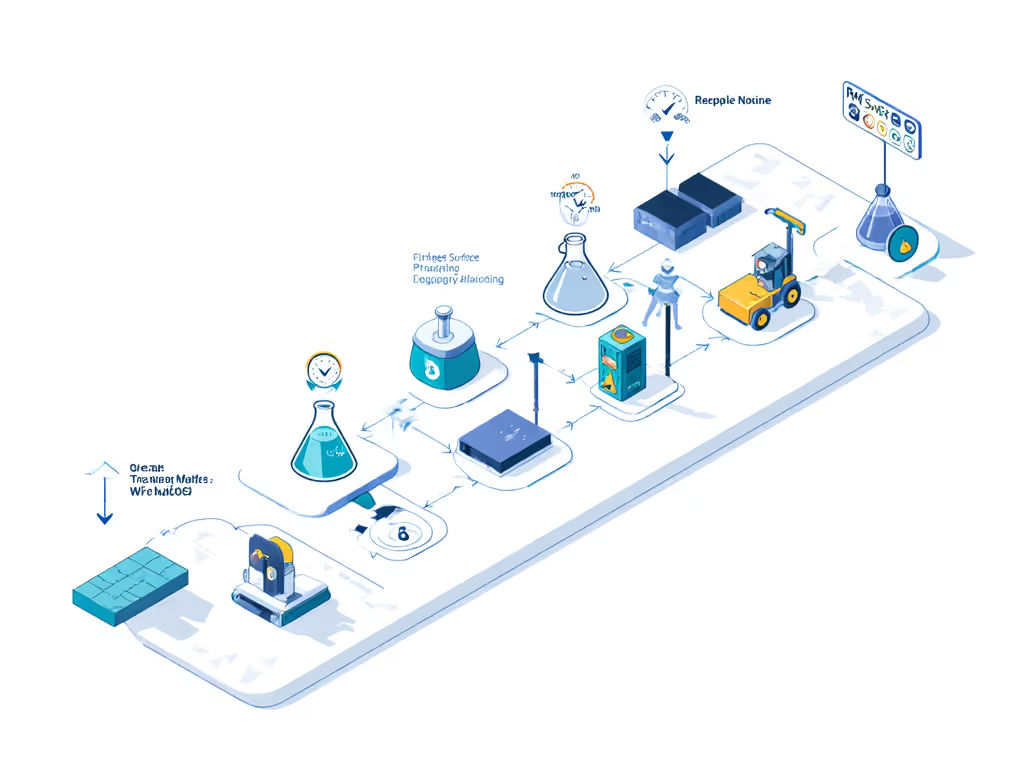
For those ready to dive deeper into surface-specific protocols, I've compiled detailed reference sheets for concrete, asphalt, and paver cleaning that include exact PSI settings, chemical dilution ratios, and troubleshooting guides for common issues.

